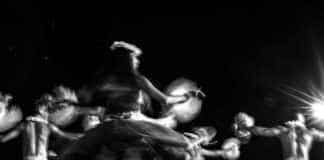Home to some of the most beautiful but desolate landscapes in the United States, Utah’s deserts hide spectacular canyons, lush rivers and historically significant locations. You’ll find a windswept land of unbelievable colour and geologic formations in the national parks in Utah.
Make sure you’re familiar with the signs of heat stroke and dehydration and prepare to be in the hot desert sun for most of the year. Temperatures during the day can get quite high, so carry plenty of water and wear sunscreen. Wear proper hiking shoes when hiking around the national parks and clothing appropriate for the weather.
Contents
National Parks In Utah
Top 3 Tours
- 8-Day Utah’s National Parks – Canyonlands, Bryce Canyon, Capitol Reef and Zion – see them on this ultimate bucket list tour.
- Arches National Park 4×4 Adventure – Experience the stunning landscape of this iconic national park.
- East Zion National Park UTV Slot Canyon Tour – Explore the slot canyons non an offroad adventure.
National Parks
1- Arches National Park
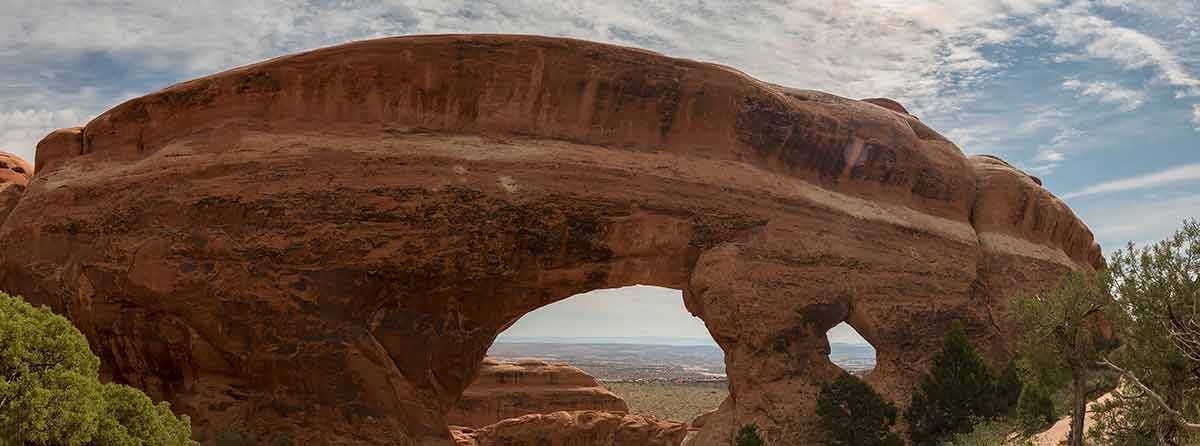
Arches National Park is an arid wonderland of red rocks that form some of Utah’s most amazing geologic constructions.
The name Arches comes from the more than two thousand red rock arches formed over geologic time by washing away softer material beneath the remaining rock.
The arches come in many different shapes and sizes.
Most of them have names and are places people hike miles to see.
The most iconic and most photographed arch in Arches National Park is the Delicate Arch.
Arches National Park is a Certified International Dark Sky Park.
Few lights exist within the park boundaries, and the ones that do are night-sky friendly.
The best outdoor night sky viewing is at Panorama Point and a 30-minute drive from the Arches Visitor’s Center, meaning that little light pollutes the night sky. A sunset and night photography tour in the park is a fantastic experience.
Arches National Park can get quite crowded, so plan to go first thing in the morning or late afternoon to avoid crowds and long lines.
Hikers should plan to carry enough water and snacks to avoid dehydration.
Visitors can camp in designated campsites only and people make reservations months in advance because the sites fill up quickly. Or join this 4×4 adventure.
2- Canyonlands National Park
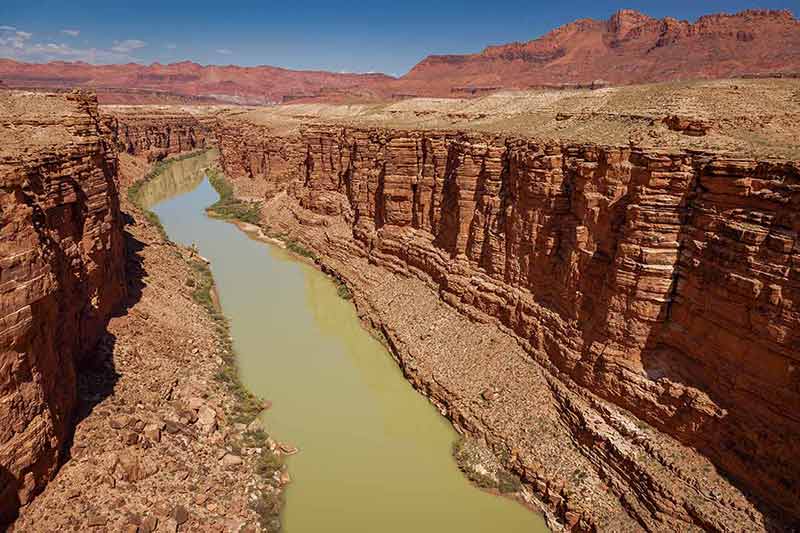
Canyonlands National Park, located near Arches National Park, contains a collection of impressive buttes and breathtaking canyons carved by the Colorado River and tributaries.
The Colorado and Green Rivers carved out the three distinct districts of the park, Island in the Sky, The Needles and The Maze.
These districts are all part of the desert region but offer different opportunities to visitors for recreation.
The Maze District is the most challenging to reach and requires a vehicle with high-clearance four-wheel drive to traverse.
The Island in the Sky Mesa is the most accessible district to get to and only requires a few hours to drive in and visit.
Hiking and four-wheel drive vehicles can take people into this district for a few hours or days into the backcountry.
The Needles District is named for the spires of sandstone that jut above the desert. Hiking and overnight camping trips are popular here.
Four-wheel drive vehicles can get into the backcountry to reach features such as Tower Ruin and Elephant Hill.
Visitor’s Centers are at Islands of the Sky and The Needles, and a small Ranger Station is the closest building to The Maze.
Visitors cannot travel between the districts from within the park and usually only visit one or two during a visit.
Backpackers must acquire a backcountry permit for remote travel into the backcountry and prepare for self-sufficiency.
Few services are offered at Canyonlands because it is so remote.
Visitors can see the remains of the people who lived in this region thousands of years ago by observing the rock art left behind.
Canyonlands, like Arches National Park, is an International Dark Sky Park. You may like this half-day tour of Canyonlands National Park.
3- Zion National Park
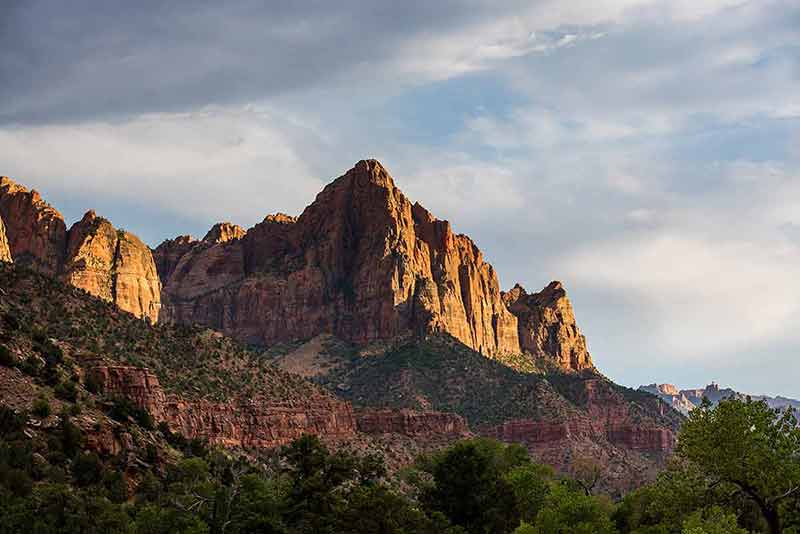
Zion National Park was Utah’s first national park, containing a wealth of plants, animals and unique geologic features.
It is one of the 10 most frequented sites in the national parks system and was the second-most visited national park in 2021.
Zion National Park has more than 124,000 acres (50,181 ha) designated as a wilderness area, which means that the land will remain untouched by development while natural forces such as fire, flood and rockfalls act on the land.
If you wish to explore the Zion Wilderness, you need a permit for overnight backpacking trips, climbing excursions and through-hikes of the Virgin River and its tributaries, as well as trips into The Subway or the Left Fork of North Creek and boating trips down the river.
Hiking, backpacking, climbing, canyoneering (which requires gear and ropes), biking, bird watching, and horseback riding are popular activities at the park.
Hiking The Narrows of the Virgin River at Zion is an incredible experience for many visitors, but only available seasonally when the water is low while flying above the park in a helicopter is an experience of a lifetime.
Because this park sees so many visitors, a free park shuttle drops visitors off at popular destinations and returns them to the Zion Canyon Visitor Center or the stop to catch a shuttle to hotels in Springdale.
Visitors to Zion can find accommodation inside and just outside of the park. The Zion Lodge inside the park is open year-round to guests.
The Red Rock Grill Dining Room at Zion Lodge is also open year-round to visitors looking for a bite to eat in the park.
Camping at the park is available at three campgrounds. One of the campgrounds is open year-round, while the other two close for the winter.
It’s best to make reservations in advance to ensure as sites are typically full from March to November. Explore the slot canyons of east Zion on this UTV adventure tour.
4- Bryce Canyon National Park
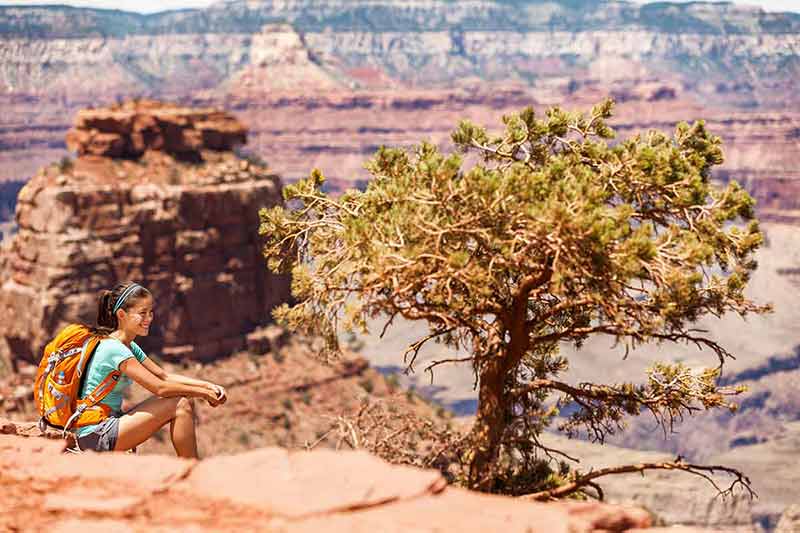
Bryce Canyon National Park has one of the world’s highest concentrations of hoodoos, located in the Bryce Amphitheater.
Hoodoos are rock spires with rounded rock at the top of the spire.
You can drive along a scenic road to see the Bryce Amphitheater with its hoodoos from above or join this small-group excursion.
Adventurous visitors looking for a challenge can hike into the Bryce Amphitheater to see the hoodoos from below.
Because Bryce Canyon is open year-round, people can enjoy snowshoeing, cross-country skiing, and winter hiking with traction devices in the park.
The scenery is even more beautiful when blanketed by snow and ice.
Ranger-led snowshoe hikes offer inexperienced people without gear a chance to experience snowshoeing at Bryce Canyon.
Hiking, scenic driving, wildlife watching, bird watching, biking, and horseback riding offer many recreational opportunities at Bryce Canyon National Park.
Lodging is available at the park and outside of it in nearby Garfield County.
The Lodge at Bryce Canyon is a historic structure in the park that is open from March to November and closes during the winter.
Two campgrounds in the park offer visitors some spaces, but they generally fill up fast in the summer.
One operates on a first-come, first-served basis, while the other accepts reservations in the summer.
The North Campground remains partially open through the winter on a first-come, first-served basis.
A free shuttle carries people through the park to cut down on the number of vehicles that drive on the park roads.
5- Capitol Reef National Park
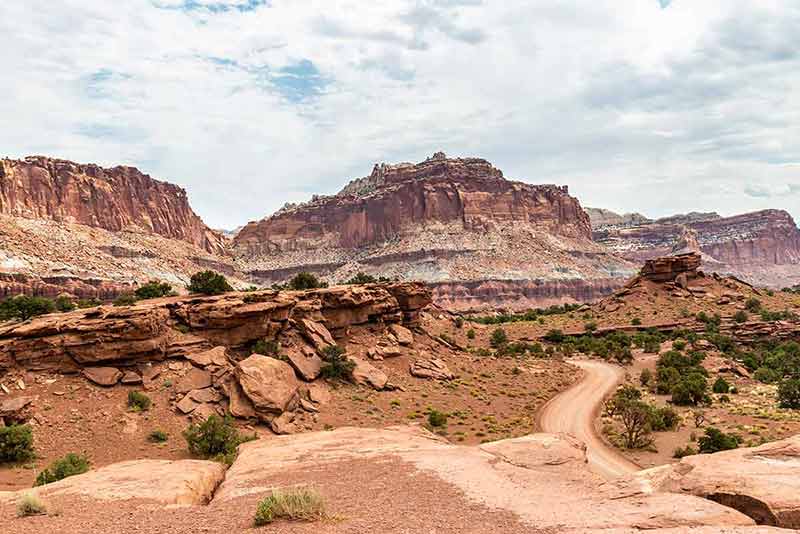
Capitol Reef National Park contains a unique geological feature, a wrinkle, on the surface of the Earth.
This wrinkle is a Waterpocket Fold that runs almost 100 miles (161 km), where a fault in the Earth’s crust pushed one side of the Fold up, approximately 7,000 feet (2.1 km) higher than the other side.
The side of the Waterpocket Fold that was not lifted exposed many layers of sandstone that have eroded over time into the domes, spires, canyons, cliffs, and arches that exist today.
Capitol Reef takes its name from the white domes of Navajo Sandstone that jut above the landscape and the sheer rock cliffs that resemble an ocean reef.
Visitors to Capitol Reef enjoy many recreational activities, including hiking, backpacking, canyoneering, rock climbing and camping.
This park also contains a large, historic orchard with around 2,000 fruit and nut trees.
You can purchase U-pick fruit from the orchard during harvest season.
The Gifford Homestead is a historic building from the early 1900s that visitors can walk through and has a sales outlet where you can shop for preserves, pies, homemade ice cream, books and various handmade artisanal items.
A developed campground at Fruita takes reservations during the summer.
Two primitive campgrounds are in remote locations of Capitol Reef National Park. A backcountry permit is required for those wishing to camp outside the established campgrounds. Pets are not allowed in the backcountry or on most of the hiking trails at Capitol Reef.
National Monuments
6- Cedar Breaks National Monument
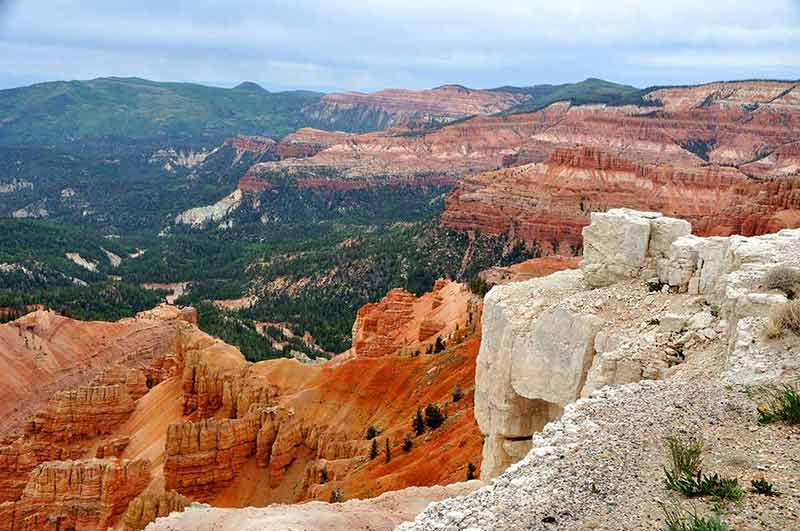
Cedar Breaks National Monument looks over a geologic amphitheatre from 10,000 feet (3 km) in altitude.
This national monument is open year-round and offers visitors a fun destination for snowmobiling, snowshoeing and cross-country skiing in winter.
Campgrounds provide people with a place to spend the night, while nice picnic areas give people a place to spend a day.
Many hiking opportunities, from easy to moderate, make it an excellent place for families with kids to explore. Because Cedar Breaks is at a high elevation, people can enjoy excellent stargazing opportunities from the overlooks.
7- Dinosaur National Monument
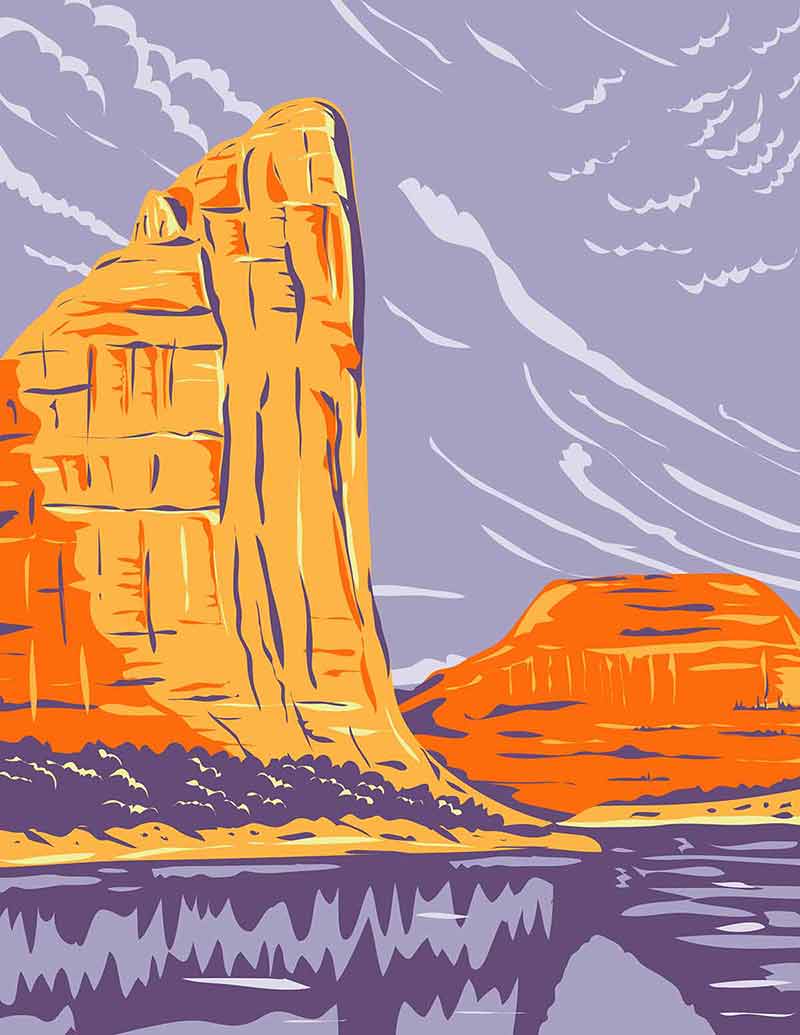
Dinosaur National Monument lies on the border of Utah and Colorado to protect the fossilised remains of the dinosaurs that once roamed this part of the planet.
The Quarry Exhibit Hall contains more than 1,500 fossils that visitors can easily see as they walk along the exposed cliff face.
River rafting on the Green and Yampa Rivers and hiking in the wilderness are fun recreational activities in Dinosaur.
You can find petroglyphs as you hike through the landscape.
You can camp at one of the six campgrounds located at Dinosaur. Five campgrounds are open year-round, although amenities during winter months may not work, and accessibility is limited.
8- Hovenweep National Monument
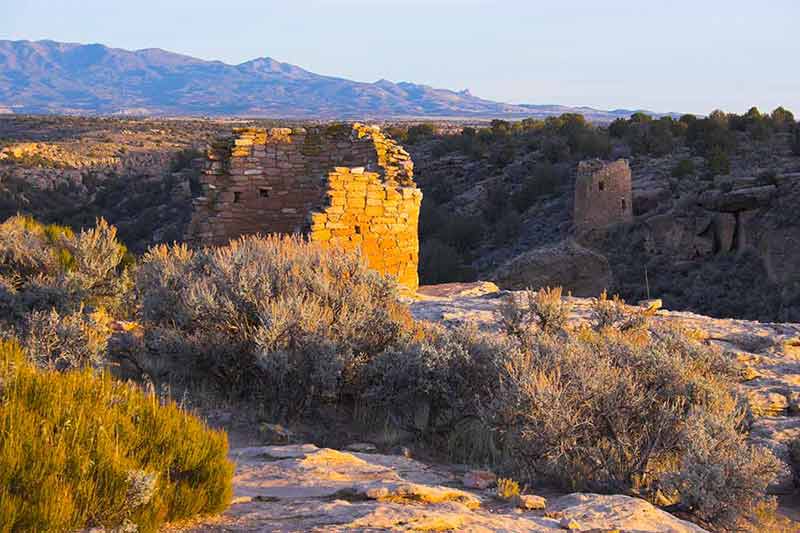
Hovenweep National Monument is in Utah and Colorado.
This monument preserves the ancient structures built by early humans between 1200 and 1300 A.D.
Six prehistoric villages contain various structures that have survived for centuries.
Archaeologists estimate that around 2,500 people once lived in Hovenweep. Hiking and camping are popular activities for visitors.
The one campground at Hovenweep is first-come, first-served and does not take reservations.
Spring and fall are the busiest times to visit Hovenweep National Monument.
9- Natural Bridges National Monument
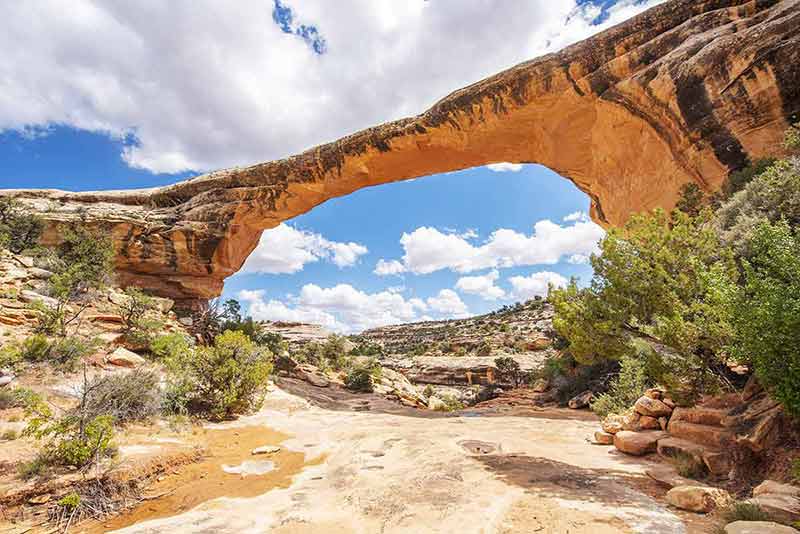
Natural Bridges National Monument was the first national monument in Utah.
This park contains three impressively large rock bridges that can be seen from an overlook above.
Adventurous hikers can travel closer to the bridges and view them from below.
These bridges, Kachina, Owachomo and Sipapu, were named in honour of the Puebloans who once called this area home.
Like Hovenweep, spring and fall are the busiest seasons to visit.
Hiking, camping, and stargazing are popular activities for visitors to this national monument.
Natural Bridges was the world’s first International Dark Sky Park.
It attracts many people who enjoy seeing the bridges at night against a backdrop of stars.
Camping at the Natural Bridges campground is available on a first-come, first-served basis.
10- Timpanogos Cave National Monument
Timpanogos Cave National Monument offers guided cave tours through an underground wonderland full of incredible formations.
To see this cave, you’ll have to hike to the cave entrance up a 1.5-mile (2.4 km) paved trail that scales the side of a mountain.
This hike is strenuous; you should only attempt it if you’re in relatively good shape.
Make sure you purchase tickets in advance to avoid being turned away due to a lack of available space on the tours.
Cave tours are only available during the summer and are not recommended for very young children, as strollers are not allowed on the trail to the cave entrance because of the steepness of the path.
Visitors cannot touch anything inside the cave to preserve the integrity of the live cave formations.
11- Rainbow Bridge National Monument
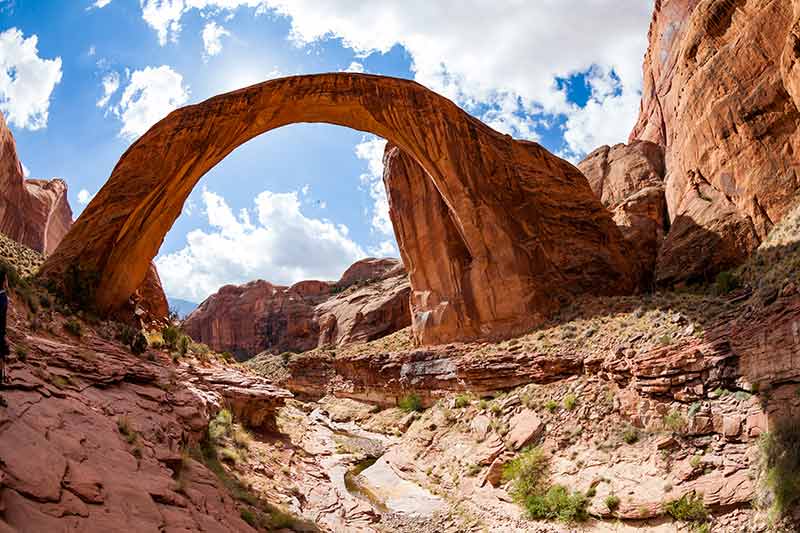
Rainbow Bridge National Monument protects one of the largest known natural bridges in the world.
This monument is only 160 acres (65 hectares), one of the smallest parts of the National Park Service.
Rainbow Bridge is accessible from Lake Powell, requiring a boat tour to the dock and an approximate one-mile (1.6 km) hike to the natural bridge.
Backpacking to Rainbow Bridge is possible but requires two days minimum and a permit issued by the Navajo Nation Parks and Recreation.
Rainbow Bridge is religiously significant to neighbouring tribes, so visitors should view the Rainbow Bridge from the viewing area instead of walking under the bridge.
National Historic Trails
12- California National Historic Trail
The California National Historic Trail follows the largest mass migration in American history during the Gold Rush in the 1840s and 1850s.
Over 2000 miles (3,220 km) of this historic trail winds through California, Oregon, Nevada, Utah, Wyoming, Colorado, Nebraska, Kansas and Missouri.
You can hike, bike, ride horses, and more along the trail.
13- Mormon Pioneer National Historic Trail
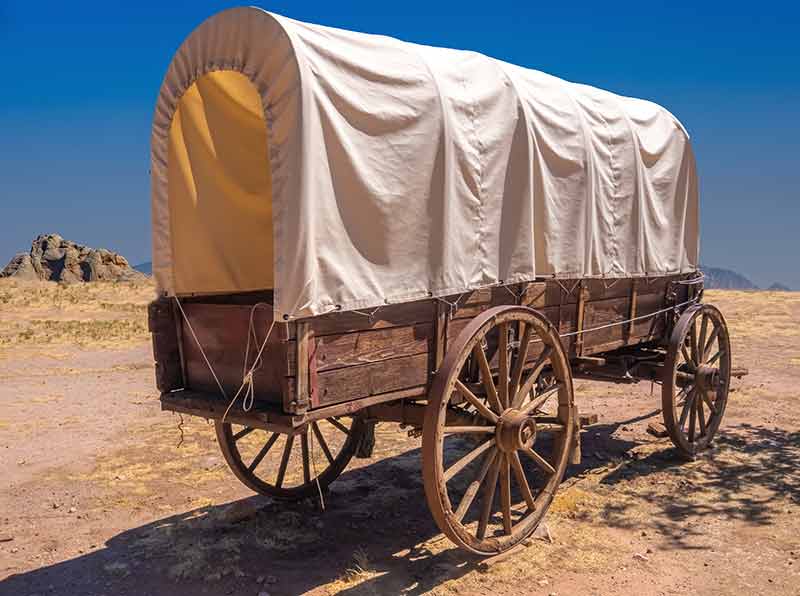
The Mormon Pioneer National Historic Trail educates visitors about the migration of Mormons from Illinois through Iowa, Nebraska, Wyoming, and Utah to the Great Salt Lake Valley from 1846 to 1847.
This 1,300-mile (2092 km) route carries traces of this migration, and visitors can hike, bike, and ride horses along sections of the trail to explore it further.
14- Old Spanish National Historic Trail
The Old Spanish National Historic Trail follows the trade route used by mule pack trains travelling between Santa Fe in New Mexico and Los Angeles in California.
Traders moved merchandise from New Mexico through Colorado, Arizona, Utah, Nevada, and California in exchange for mules and horses.
This 2,700-mile (4,345 km) trail contains museums, historic sites, landmarks, and trail markers along the route.
You can bike, hike, ride horses, and more along sections of the trail.
15- Pony Express National Historic Trail
The Pony Express National Historic Trail tracks the journey that riders once took from St. Joseph, Missouri, to Sacramento, California, to carry mail.
They could make the 1,800-mile (2,900-kilometer) trip in 10 days.
The trail ran through Missouri, Kansas, Nebraska, Colorado, Wyoming, Utah, Nevada, and California.
This method was the fastest, most reliable way to carry information before the invention of the telegraph.
Historic sites and museums help visitors interpret and understand the history of this trail.
National Historical Park
16- Golden Spike Historical Park
Golden Spike Historical Park showcases where the first transcontinental railroad was officially completed and the final railroad spike was driven into the ground in 1869.
You can tour the small historic site with its museum and the replicas of Victorian-era locomotives.
This site is open year-round and hosts costumed reenactments every Saturday during the summer.
National Recreation Area
17- Glen Canyon National Recreation Area
Glen Canyon National Recreation Area is spread across 1.25 million acres (more than 500,000 hectares) of land in Utah and Arizona.
This recreation area offers visitors many opportunities for water-based activities on Lake Powell and hiking to places like Horseshoe Bend on the Colorado River.
Primitive and developed campgrounds are available to visitors year-round on a first-come, first-served basis.
Wild and Scenic River
18- Virgin River
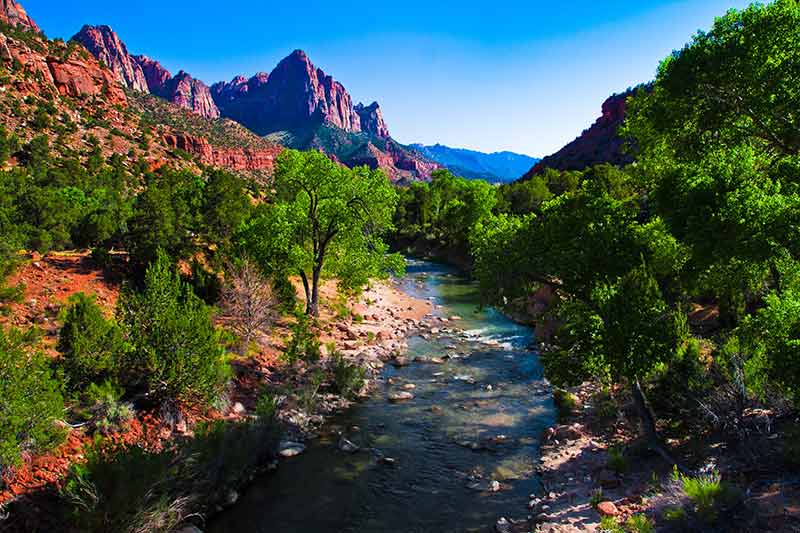
The Virgin River flows through Zion National Park in southern Utah.
About 165.5 miles (266 km) of the river and its tributaries became part of the National Wild and Scenic River System.
This river carved out The Narrows in Zion National Park and is an incredibly scenic hike, possibly one of the most beautiful in the world.
Many species use this river corridor, including Desert Bighorn Sheep, the Mexican Spotted Owl, Mule Deer, Ringtail Cats, Bobcats, Foxes, and Rock Squirrels.
You can also find prehistoric Native American archaeological sites, and in some sections, the Virgin River has carved out the world’s tallest sandstone cliffs, the remains of the largest ancient dune desert.
This river offers many recreational activities, including fishing, hiking, wildlife watching, hunting, and driving off-road vehicles.
If you love exploring national parks, you might like to read:
- Wyoming National Parks Guide
- Nevada National Parks Guide
- Michigan National Parks Guide
- 5 Maine National Parks
- New Hampshire National Parks Guide
- 25 National Parks in Canada
- 17 National Parks in Argentina
- Tasmania National Parks
- 20 National Parks in Mexico
- 18 New Mexico National Parks
- 18 National Parks in Massachusetts
- 17 Colorado National Parks
- 4 Indiana National Parks
- 5 Nebraska National Parks
- 30 Virginia National Parks
- 9 New Jersey National Parks
- 8 National Parks in Arkansas
- 8 Alaska National Parks
- 13 Tennessee National Parks
- 6 National Parks in Louisiana
- 5 Illinois National Parks
- 7 National Parks in Oklahoma
- 7 National Parks in South Dakota
- 12 Alabama National Parks
- 5 North Dakota National Parks
- 8 National Parks in West Virginia
- 20 National Parks in Arizona
- 11 National Parks In Florida
- 8 Hawaii National Parks
- 6 National Parks In Idaho
- Texas National Parks Guide
- 9 California National Parks
- 11 National Parks In Georgia
- 7 National Parks In Missouri
- 5 National Parks in Minnesota
- 7 National Parks In Kentucky
- 8 National Parks In Montana
- 15 National Parks In Washington State
- 8 South Carolina National Parks
- 12 North Carolina National Parks
- 4 Wisconsin National Parks
- 20 National Parks In India
- 11 Oregon National Parks
- 5 Connecticut National Parks
- 27 National Parks In New York State
- 4 Iowa National Parks
- Yosemite National Park
- Zion National Park
- 21 National Parks in Pennsylvania
- 9 National Parks in Mississippi
- 5 National Parks in Rhode Island
- 9 National Parks in Taiwan
- 20 East Coast National Parks
- Guide To Winter in Yellowstone National Park
Plan Your Trip

Rent A Car – Find the best car rental rates at Discover Cars. They compare car hire companies to provide you with the best deal right now.

Find A Hotel – If you’re curious about this article and are looking for somewhere to stay, take a look at these amazing hotels.
